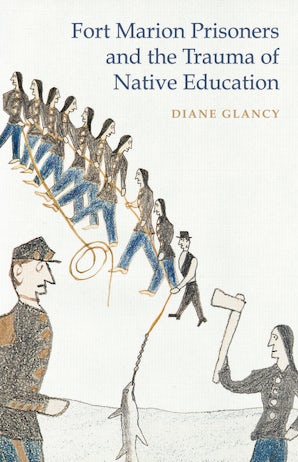
136 pages
3 photographs, 9 illustrations
November 2014
978-0-8032-5693-4
$20.00 Add to CartNovember 2014
978-0-8032-5694-1
$20.00 Add to CartAt the end of the Southern Plains Indian wars in 1875, the War Department shipped seventy-two Kiowa, Cheyenne, Arapaho, Comanche, and Caddo prisoners from Fort Sill, Oklahoma, to Fort Marion in St. Augustine, Florida. These most resistant Native people, referred to as “trouble causers,” arrived to curious, boisterous crowds eager to see the Indian warriors they knew only from imagination. Fort Marion Prisoners and the Trauma of Native Education is an evocative work of creative nonfiction, weaving together history, oral traditions, and personal experience to tell the story of these Indian prisoners.
Resurrecting the voices and experiences of the prisoners who underwent a painful regimen of assimilation, Diane Glancy’s work is part history, part documentation of personal accounts, and a search for imaginative openings into the lives of the prisoners who left few of their own records other than carvings in their cellblocks and the famous ledger books. They learned English, mathematics, geography, civics, and penmanship with the knowledge that acquiring the same education as those in the U.S. government would be their best tool for petitioning for freedom. Glancy reveals stories of survival and an intimate understanding of the Fort Marion prisoners’ predicament.
Diane Glancy is an emerita professor of English at Macalester College and is currently a professor at Azusa Pacific University in California. She is the author of numerous novels, including Claiming Breath (Nebraska, 1992), Designs of the Night Sky (Nebraska, 2002), and The Reason for Crows: A Story of Kateri Tekakwitha.
“This book is mesmerizing and will stay with you for lifetimes.”—Jackie Old Coyote, Apsaalooke Nation, former director of education and outreach at the Harvard Project on American Indian Economic Development
Ledger Book Drawing: The Catch, Bear’s Heart